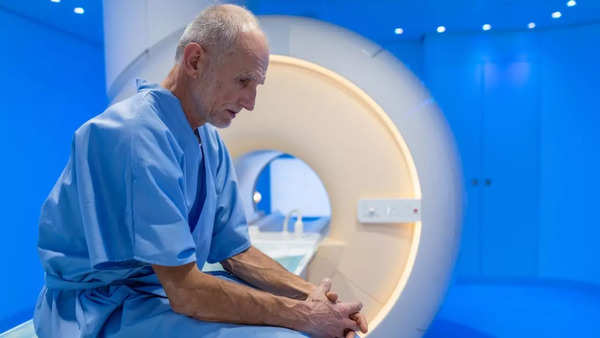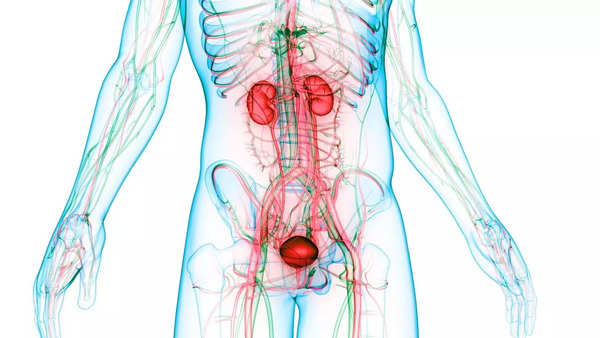Prostate cancer cases have seen an upward trend in younger men in recent times. This is particularly concerning, not only because prostate cancer, which is common in men over the age of 65, is also seen in younger men, but because early-onset prostate cancer tends to be more aggressive and has lower survival rates than the typical form.
While reasons behind the cancer affecting younger men or those below 55 years are not clear, experts and studies suggest it could be due to lifestyle factors like being obese, genetic factors, lack of physical activity,
HPV infection
, and exposure to cancer-causing agents.
Very rarely, prostate cancer could affect teenagers or young adults. In the United States, about 10% of men diagnosed with prostate cancer are under 55. Globally too,
early onset prostate cancer
is on rise, but research is still going on to find out the actual reason.
“Prostate cancer is increasing overall in the population. However, there is some increase in its incidence even among younger men also. By younger I mean usually it is seen after the age of 65 but in a younger population between 50 and 65 also we are now beginning to see a little more number of cases of (0:28) prostate cancer among men,” says Dr Anil Kumar Anand, Senior Director & Head, Radiation Oncology, Fortis Memorial Research Institute, Gurugram.
“This could be attributed to advances in diagnostic modalities, frequent screenings and increased awareness of the disease,” says Dr. Deepak Ragoori, Senior Consultant Urologist & Facility Director, Asian Institute of Nephrology and Urology Hyderabad.
Early onset prostate cancer, diagnosed in men below 55 is different from prostate cancer diagnosed at an older age. A number of large population based studies have demonstrated poor survival among patients below 50 with advanced prostate cancer or unknown stage disease as compared to older patients.
Among men diagnosed with high-grade and stage prostate cancer, men with early onset prostate cancer are more likely to die of their cancer, with higher cause-specific mortality than all others except those diagnosed over age 80, according to Journal Nature Reviews Urology.
Symptoms of prostate cancer in young
Symptoms of this prostate cancer are the same as age-related prostate changes and can include a decrease in urine flow, increased frequency of urine, and urine at night and day.
“Burning sensation and difficulty in passing urine, weakness and in some rare cases when the prostate cancer has spread beyond the prostate, there might be constipation. Pain in the bones, weight loss, general anorexia and loss of muscle mass can also be reported,” says Dr Shalabh Agrawal, Consultant, Urology, CK Birla Hospital, Gurgaon.
Who is at risk?
When it comes to determining their risk factor for early-onset prostate cancer, men should look into their family history closely. If someone in the family or relatives have the history of the disease, the screenings must be prioritized.
“If somebody in the family has prostate cancer, such people should be a little more careful and they should have more frequent screening for prostate cancer,” says Dr Anand.
Dr Agarwal feels environmental factors and lifestyle factors are also among the leading risks for more and more younger men getting diagnosed with this aggressive form of prostate cancer.
“First and foremost are the environmental factors, which include the dietary factors, the lifestyle factors and the psychological or the social factors. Second important part is the genetics, which keeps on varying, which keeps on changing and the third reason for increased incidence is detection at early stage by PSA screening,” says Dr Agrawal.
Dr Anand feels weight and
obesity
could also be the culprits as prostate cancer is seen more frequently in obese men, people with high fat diet and overweight.
The possible role of modern diet and other lifestyle factors
Wrong dietary choices could be heightening the risk of malignancies, including prostate cancer. Fixing lifestyle issues could help cut the risk.
Taking a diet, which is very high in protein, sugars, and fat, could potentially increase incidence of prostate cancers.
“Increased intake of alcohol, increased smoking, again avoiding daily exercise, a sedentary routine lifestyle and addictions can increase the incidence of cancers in our body,” says Dr Agarwal.
Sleep deprivation and anxiety can affect general well-being and raise risk of cancer, as per the oncologist.
What men can do to prevent prostate cancer
Fix lifestyle
Lifestyle factors may play a big role in early-onset prostate cancer. Dr Anand says fixing diet and lifestyle can help majorly. He recommends reducing fat intake, eating more fruits and vegetables, avoiding charred meat, and drinking green tea to nourish the body well with sufficient antioxidants.
“Maintaining a healthy weight, regular exercise, quitting smoking, drinking less, increasing Vitamin D and staying sexually active can also cut this risk to some extent,” says the expert.
Get screened
Serum PSA is a well-known tool for prostate cancer screening and an indicator to suspect prostate cancer. PSA level is lower in these patients due to poorly differentiated adenocarcinoma of the prostate. So PSA level is not indicative of prostate cancer which poses a challenge in diagnosing at an early stage.
How to get the serum test done
A simple blood test which is called prostate cancer screening is done. Known as prostatic specific antigen, it is done by taking a blood sample.
“Serum PSA should be done yearly in healthy populations after the age of 50. However, if there is a family history we can start even earlier after the age of 40. High levels of PSA should be examined further but it is not that everybody who has a high PSA will have prostate cancer,” says Dr Agarwal.
The expert cautions that PSA can be high in some people with urinary tract infections. It is important to consult an expert who will distinguish whether this high PSA is because of infection or somebody is developing a cancer.
“Instead of employing the wait and watch strategy typically employed with older age group males, treatment should be started as soon as possible because younger patients have an otherwise higher life expectancy,” says Ragoori.
Breast Cancer In Indian Women: How Early Periods, Breast Density Among Multiple Factors Are Causing The Rise
I’m Manas Ranjan Sahoo: Founder of “Webtirety Software”. I’m a Full-time Software Professional and an aspiring entrepreneur, dedicated to growing this platform as large as possible. I love to Write Blogs on Software, Mobile applications, Web Technology, eCommerce, SEO, and about My experience with Life.







